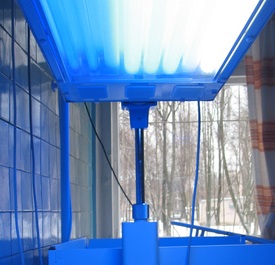
Psoriasis on the penis is not uncommon but it’s something people often don’t like to talk about. People may be embarrassed even to talk to their doctors about it. If you’re having symptoms of psoriasis, or any other skin problem for that matter, in your genital area, don’t be afraid to talk to your doctor. It’s nothing he or she hasn’t seen before. Since that is such a sensitive area, penile psoriasis can be very uncomfortable. You don’t need to suffer.
Types of Psoriasis on The Penis
There are five different types of psoriasis, with plaque psoriasis being the most common. Sometimes plaque psoriasis does appear on the penis, with red patches that appear scaly. The type of psoriasis usually found on the penis, though, is inverse psoriasis. Affected areas are very red but instead of appearing scaly, they are smooth and shiny. Follow this link to see a picture of inverse psoriasis.
Inverse psoriasis usually develops in between folds of skin or in other areas where body parts rub together, like in the armpits, under the breasts, and in the groin area. The moisture and friction in those areas usually prevent scales from building up.
The constant friction can cause severe irritation, however, and makes inverse psoriasis quite uncomfortable. Add that to the fact that it often occurs in very sensitive areas, like the groin area, and you can see why people with the condition are desperate for relief. Not only can psoriasis in this area cause constant discomfort, but it can also make sexual activity unpleasant or painful, as well, which can interfere with relationships.
People with penile psoriasis may have psoriasis on other areas of the body or it may be confined to just the genitals. Sometimes they have inverse psoriasis in the genital area and plaque psoriasis on other parts of the body.
Treating Psoriasis on The Penis
Penile psoriasis is usually treated with topical medications or with phototherapy. There are advantages and disadvantages to both.
Topical medications are often effective on psoriasis in the genital area but some shouldn’t be used on such sensitive skin or should be used with caution because they can cause burning, stinging, or discomfort in that area. The National Psoriasis Foundation recommends low-strength corticosteroid creams for treating genital psoriasis.

Phototherapy is often effective on psoriasis of the penis but UV light must be used in lower doses than is normally used in order to avoid burning the thin, sensitive skin in that area. Doctors usually prescribe topical medications first and reserve phototherapy for cases in which topical treatment doesn’t seem effective, since applying topical medication at home is much easier than making repeated visits to your doctor’s office for phototherapy.
If topical medications and phototherapy aren’t effective, oral or injected medications may be recommended. Usually, though, topical treatment and/or phototherapy do the trick.
Natural Treatments For Psoriasis
Some people prefer natural treatment for psoriasis. Some natural treatments are more effective than others, but they should be as effective on psoriasis of the genital area as in any other area of the body. However, since the genital area is such a sensitive area, some natural treatments may cause discomforts, like a burning or stinging sensation. Before using any type of natural product on your penis or any other sensitive area, check with the manufacturer or your physician or pharmacist to make sure it’s safe and appropriate for that area.
Our favorite treatment for psoriasis in the genital area is Terrasil. Terrasil offers a formula specifically designed for the treatment of psoriasis but for psoriasis in the genital area, we recommend Terrasil Original Formula. It contains natural ingredients like organic beeswax, jojoba seed oil, and palmarosa essential oil, which relieve the symptoms of psoriasis without irritating sensitive skin. To learn more about Terrasil, just follow the link.
National Psoriasis Foundation: Genital Psoriasis
